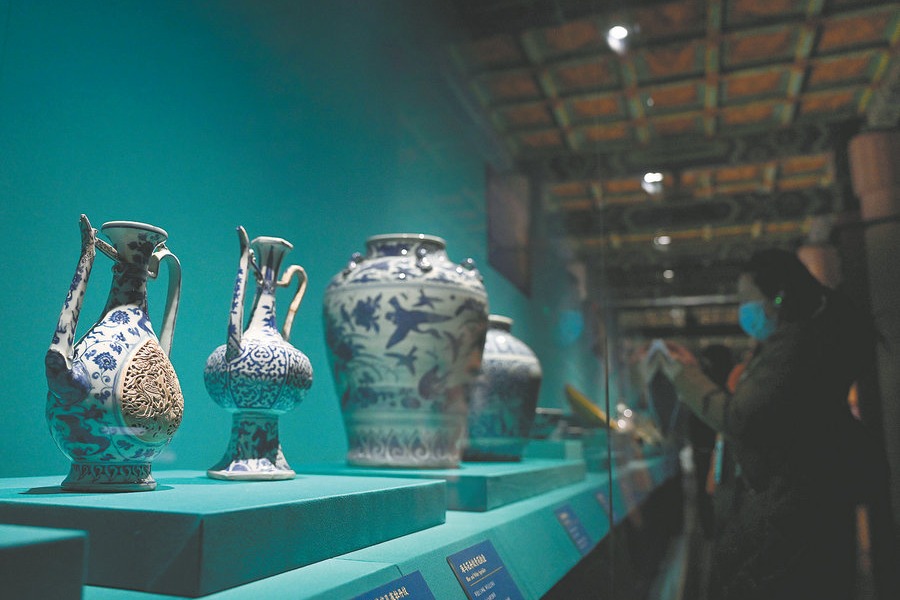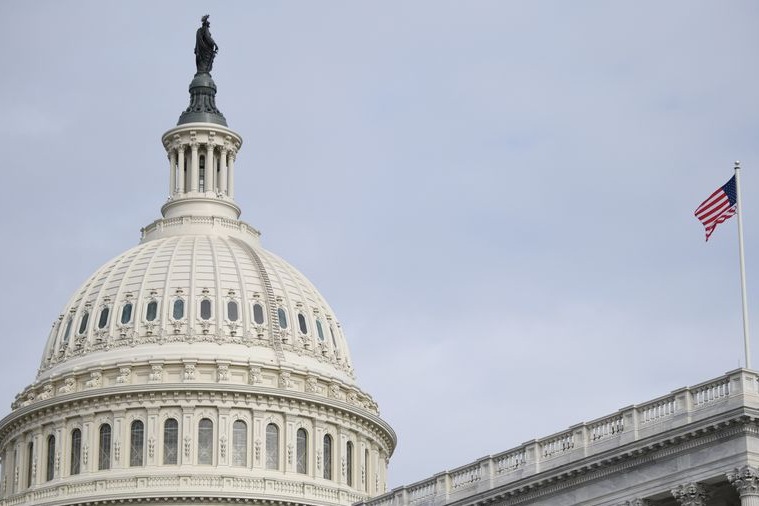Views: China's Spring Festival


Editor's note: Chinese Spring Festival also called Lunar New Year is the most important festival in China. There are lots of traditions and celebrations associated with the festival, and the 2023 Chinese New Year is the year of the Rabbit. It is expected that billions of passenger trips will be made across China during the Spring Festival travel rush this year. Four experts share their views on the issue with China Daily.
Ban on firecrackers should continue
By Liu Dongchao
The Chinese people have been setting off fireworks and firecrackers to mark celebrations and even solemn occasions for the past 2,000 years. The earliest record of fireworks is from the Han Dynasty (202 BC-AD 202) when people threw bamboo stems into a fire to produce an explosion with a loud sound, in order to ward off evil spirits. As for gunpowder, it was first used to make firecrackers and fireworks during the Song Dynasty (960-1279).
This Chinese folk custom has influenced neighboring countries, too. As a result, people in Japan, the Republic of Korea, Myanmar and Singapore also set off fireworks and firecrackers to mark special occasions.
But opinions in China today are divided on whether to relax the restrictions on setting off firecrackers and fireworks. Those in favor of fireworks even claim that fireworks and firecrackers can eliminate the novel coronavirus while others say firecrackers should be burst to "celebrate" special occasions including the end of the COVID-19 pandemic.
Some have even compared fireworks with "faith", saying setting off fireworks is the ideal way of promoting group activity to strengthen national unity. Still others say that bursting firecrackers is a way of continuing the cultural tradition of Spring Festival, while others argue that since some countries are trying to get fireworks included in tangible and intangible world heritage lists, China should lift the ban on fireworks and firecrackers.
First, there are strong grounds, both environmentally and legally, for banning firecrackers and fireworks in certain areas. Since the 1990s, firecrackers and fireworks have been banned in some places in order to prevent environmental pollution, ensure people's safety, protect property, and maintain a harmonious social order. The decision was taken by local legislatures and governments based on local conditions and in line with the wishes of the general public.
The Beijing municipal government, for instance, has banned fireworks and firecrackers in urban areas, although it was not the first to do so. The capital promulgated the Regulations of Beijing Municipality on the Prohibition of Fireworks and Firecrackers in October 1993. It further made clear the regulations in the Beijing Fireworks and Firecrackers Safety Management Regulations issued in September 2005, stipulating that bursting of firecrackers and fireworks within and including the Fifth Ring Road is prohibited.
The Regulations on Fireworks and Firecrackers Safety Management, which was introduced by the State Council, China's Cabinet, in January 2006, says local governments at or above the county level can fix the time, place and type of restrictions or prohibitions on fireworks according to the real local conditions.
Second, from the perspective of environmental protection, the ban on setting off fireworks and firecrackers is fully justified, because the main components of fireworks are carbon, nitrate and sulfur, which produce sulfur dioxide on being set off.
Sulfur dioxide is not only one of the main air pollutants, but also a typical carcinogen. It could also damage the human respiratory tract and cardiovascular system, and induce acute attacks of coughing and asthma in some allergic children. In addition, firecrackers also produce nitrogen dioxide and various metal oxides. Even adults can feel discomfort in the smoke emitted by fireworks and firecrackers.
Besides, firecrackers cause noise pollution, which could irritate and scare the sick, aged people and infants. So completely lifting the ban on fireworks will harm the health of many apart from inconveniencing people.
Third, in terms of people's safety and property protection, the ban on fireworks and firecrackers is valid. From ancient times to the present, loss of life and property in fires triggered by fireworks and firecrackers has been a recurring tragedy. For instance, the Meridian Gate Tower caught fire while Yongle Emperor Zhu Di was watching the display of fireworks in 1415, killing many people on the spot. Governor Ma Wang who led the army to bring the fire under control, too, became a victim of the fire. There are similar examples from the ancient to modern times.
The harm caused by firecrackers and fireworks is often directly proportional to the density of buildings and population in a given area. Yet the reverse is not true, because in the vast rural areas with relatively shorter buildings and low population density, the damage to people's lives and properties is not necessarily small. This is because people in rural areas have relatively poor awareness of protection, protective measures are often not in place, and some risk groups (mainly children and adolescents) receive relatively little education on how to handle fireworks.
Fourth, economically speaking, the ban on fireworks and firecrackers will result in losses for some people and companies, but there is another side to the issue. The national output value of this industry is 60-70 billion yuan ($8.9-10.4 billion), and the entire industrial chain employs 3-4 million people.
But controlling the air pollution caused by fireworks and firecrackers, putting out fires caused by fireworks or firecrackers, and addressing the health hazards created by fireworks and firecrackers will cost a lot of money, social resources and time. Thus it is not advisable to completely lift the ban on firecrackers and fireworks.
Furthermore, nationwide, the areas where setting off firecrackers and fireworks is banned are densely populated which need to be specially protected (such as archaeological sites). Also, it is necessary to study how fires caused by fireworks or firecrackers in China's vast countryside can be prevented. On the whole, the ban on firecrackers and fireworks should not be lifted.
The author is a professor in the department of literature and history research at the Party School of the CPC Central Committee.
Ensuring a safe Spring Festival travel rush
By Jia Yuanhua/Li Jian
Thanks to the easing of COVID-19 prevention and control measures, this year's Spring Festival travel rush (Jan 7-Feb 15) will be the most special since the outbreak of the novel coronavirus three years ago.
To begin with, the flow of people across China during Spring Festival is expected to significantly increase and the spatial distribution of passenger flow is likely to become more complex, increasing the uncertainties and difficulties for the transportation sector.
The scale and intensity of traffic in cities and urban agglomerations will be markedly higher than in the previous couple of years, and cross-provincial and cross-border tourist flows may see a rebound, increasing the challenges and pressure for both passengers and transport operators. It can be safely said that this year will see the first Spring Festival travel rush in the true sense of the term since the pandemic broke out.
All this mean China's transportation industry faces a tough test during Spring Festival. No wonder the government has made the orderly flow of passengers and flights, trains, buses and cars its top priority, followed by pandemic prevention and control, disaster prevention and management. Achieving the above goals is an arduous task by any standard and requires careful organization, efficient operation and coordinated action.
Based on the analysis of the Spring Festival travel season in the past and the special characteristics of this year, "safe Spring Festival travel" is subject to two factors. One is weather, because facilitating the smooth flow of road, rail and air transport, and responding to emergencies depend on the whims of the weather. The second is the impact of rising infections due to the lifting of the strict anti-pandemic restrictions.
Although it is necessary to take measures to prevent infections on buses, trains and flights during Spring Festival for a different, specific reason, given the changed situation this year, there are some common unfavorable factors. For example, how to scientifically control large-scale infections at bus and train stations, airports and other places of passenger concentration? Or, how to quickly provide medical aid for a person who has contracted the novel coronavirus while he or she is traveling?
These are some of the new challenges for the authorities during the Spring Festival travel rush this year, but they will provide valuable experience for the transportation industry to establish an effective epidemic prevention and control mechanism.
To cope with these problems, the authorities have to first improve the basics of safe travel and strengthen traffic rules in order to realize the goal of safe Spring Festival travel.
There is also a need to minimize and mitigate the impacts of natural disasters on transportation and prevent secondary disasters, for which the authorities have to strengthen the linkage between transportation, meteorology (especially weather forecast), emergency support and other departments, and improve the overall traffic emergency plans, by paying special attention to key areas such as mountainous roads, long bridges and tunnels.
Besides, if there is a sudden and massive spike in infections during the Spring Festival travel season, it could affect social stability. Therefore, the transportation department should cooperate with the National Health Commission to deploy more personnel and fully stock emergency medicines and medical equipment to prevent infections in long-distance buses, trains, ships, aircraft, and transport hubs, and make detailed emergency plans to deal with sudden infection outbreaks, including providing proper medical treatment for infected persons, especially the critically ill.
Also, it is necessary to establish multiple-departmental coordination to ensure the smooth supply of commodities and medicines, quickly respond to emergencies including natural disasters, and better share travel service information with the public.
Better sharing transport information means not only sharing with the public the layout, passenger capacity, availability of tickets and facilities in expressway service areas, but also informing people about road conditions, accidents, area-wise epidemic situation, cross-regional and cross-modal transportation situation, and accurate weather forecasts.
Further strengthening multi-modal coordination, and different ministries and commissions making joint efforts to optimize transportation services to guarantee unhindered supply of commodities are also necessary.
Using the modern transportation network, which is an efficient integration of various modes of transportation, the authorities should make efforts to create a special Spring Festival transportation network so as to provide smooth and convenient transportation services for the public during the Chinese Lunar New Year travel season.
There will be many uncertainties in terms of passenger and cargo flow this year. While the spatial distribution of cross-provincial passenger flow will likely be more complex, the transportation demand in cities is expected to be high.
Therefore, it is necessary to balance supply and demand in the transportation sector, especially during the Spring Festival travel rush when freight, too, is expected to peak. So transportation departments at all levels should make all the necessary arrangements to meet the passengers' demand for high-quality travel experience, and ensure the supply of materials to prevent price rises. They should also strengthen overall coordination with the public security, emergency, and health departments.
That expressways are toll-free during the Spring Festival travel rush means heavy traffic and congestion, and crowded inter-provincial checkpoints, which will increase the risk of epidemics.
So the transportation department should work with other departments to prevent secondary public health crises and derivative disasters, and the authorities should attach greater importance to improving overall sanitation to prevent infections and be prepared to deal with medical emergencies, quickly launch rescue and relief operations in case of disasters, and build a professional collaboration platform comprising the transportation department and the epidemic prevention and emergency support authorities.
The transportation department also needs to establish an emergency command and dispatch mechanism that can meet the demands of the post-epidemic era, and further strengthen the emergency support capability of all modes of transportation.
Jia Yuanhua is a professor of transportation engineering at the School of Traffic and Transportation, Beijing Jiaotong University. Li Jian is an associate professor at the University of Emergency Management.
Let 2023 pull rabbit of hopes out of the hat
By Berlin Fang
We have just witnessed the end of 2022, a year that brought hardships on many due to a lingering pandemic, a deteriorating economy and a disastrous conflict with far-reaching consequences. Every time we thought we had turned a corner, life threw another curveball at us. For a summary of 2022, I can only think of the powerful ending from William Faulkner's The Sound and the Fury: They endured.
The coming lunar year is the Year of the Rabbit. I do not know what rabbit this coming year will pull out of the hat, but let me just say "rabbit, rabbit", a phrase people say at the start of the month for good luck.
At the start of a new year, it is customary for us to make good wishes. I do not know if wishing someone good luck or good fortune can help, but I have noticed that sending prayers and thoughts can work miracles. Among other things, it creates good vibes of care and attention to lift the spirits of those on their most difficult days.
Before the turn of the year, most of my relatives in China, including my 93-year-old mom, got COVID. My family and friends prayed, sent support and lifted each other in spirit. My mom overcame the illness, and so did other relatives. I appreciate having a large family to support one another, which made it possible to struggle together with hope, instead of sinking one by one in desperation.
Speaking of having a large family, I remember that in Western culture, rabbits are associated with fertility and renewal of life. They multiply fast, which can also symbolize new life and abundance. We celebrate the Year of the Rabbit every 12 years, but each year, on Easter Day, one sees Easter bunnies, which signify new birth and new life.
Birth rates are falling in many countries around the world, including China. May the new year bring hope, so that people would want to have children to embody and embrace that hope.
In the past year, many families struggled financially; it is only appropriate that we strive for economic recovery and growth. Rabbits are associated with fortune and luck. We can certainly use some of that after a year of bad stock performances and rising consumer prices.
Interestingly, the Chinese resort to some rabbit wisdom when it comes to financial investment, as shown in the proverb: "A shrewd rabbit has three caves." This proverb can mean — in terms of another proverb — that you should not put your eggs in one basket, or: "The rabbit that has but one hole is quickly taken" (English proverb). As a side note, a rabbit cave is also called a "burrow". A group of burrows is called a "warren", as in "Warren Buffett" (no relation).
Rabbits are also symbols of quickness and agility, which result from having good health. At the start of the new year, we make new year resolutions that involve gyms and diets. There are many types of diets, including the Paleo diet, which avoids sugar, and the Mediterranean diet, which includes unprocessed cereals, fruits, vegetables, some fish, dairy products and meat products. The ketogenic diet includes high-fat, sufficient protein and lowcarb consumption. While other elements vary, the common denominator of all healthy diets is "rabbit food", a common expression about leafy vegetables and other plant-based food.
Across cultures, the rabbit symbolizes innocence and simplicity; it is also associated with childhood. Alice's Adventures in Wonderland features the White Rabbit as a central character who guides Alice as she travels through Wonderland. Rabbit can also represent kindness and love: Margery William's The Velveteen Rabbit tells the story of a toy rabbit who becomes real through a child's love, a powerful story of transformation through kindness. May we remember these qualities. At the very least, do no harm, or be "harmless as a pet rabbit", especially to rabbit-like people who are known for their endurance. "Even a rabbit bites when cornered" (Chinese proverb).
To sum up, I hope I can borrow from some of the titles in John Updike's tetralogy (Rabbit, Run; Rabbit Redux; Rabbit Is Rich and Rabbit Is Remembered): In the Year of the Rabbit, run for good health, get richer if not rich and do not pass an opportunity for kindness worth remembering in your later years.
Happy New Year! I hope that by the end of the Year of the Rabbit, the keywords to come to our mind will no longer be: They endured. Instead: They enjoyed!
The author is a columnist based in Texas.
The views don't necessarily represent those of China Daily.
If you have a specific expertise, or would like to share your thought about our stories, then send us your writings at opinion@chinadaily.com.cn, and comment@chinadaily.com.cn.


































